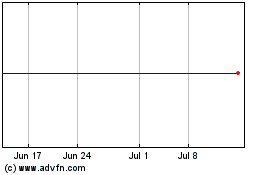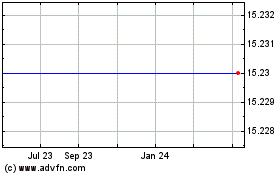By Eric Sylvers and Adrienne Roberts
Behind Fiat Chrysler Automobiles NV's proposed alliance with
Renault SA lies the need to fix chronic weakness at the
Italian-American company's Fiat brand.
But unlike its biggest seller, Jeep, Fiat sells predominantly
small cars that compete in a crowded European mass market with low
profit margins. The struggles of Fiat, the group's No. 2 brand, are
an enduring problem for the parent company because the brand
accounts for almost a third of vehicle volume and sucks up
investment that could be spent on the more lucrative Jeep and Ram
brands.
The Fiat brand and its challenges in Europe are likely a major
part of negotiations with potential alliance partners, said
Philippe Houchois, an analyst at Jefferies LLC, adding, "They need
someone to help turn around Europe" for Fiat.
Fiat Chrysler proposed Monday a 50-50 merger with Renault, whose
board is set to meet Monday to consider the idea. If a full-blown
deal doesn't materialize, Fiat Chrysler could join Renault's
alliance with Nissan Motor Co. and Mitsubishi Motors Corp.,
according to people familiar with the matter.
The car industry's cyclical, capital-intensive, and
hypercompetitive nature has pushed many manufacturers to seek
economies of scale. The need to invest in new technology for
electrification and autonomous driving has increased that
pressure.
Sharing vehicle platforms and engineering resources -- and
cooperating in areas such as procurement -- would help the car
makers cut costs and achieve those economies of scale. Fiat could
benefit from sharing with Renault's Clio model, one of the
best-selling small cars in Europe. A full merger creating a company
with a single strategy would make it easier to realize the
gains.
Sergio Marchionne, Fiat Chrysler's longtime chief executive who
died unexpectedly last year, believed the industry needed
consolidation.
Mr. Marchionne's successor at Fiat Chrysler, Mike Manley, has
said the group is strong enough to stand alone, but will evaluate
other options. The company declined to make any executives
available for an interview for this story.
While Fiat Chrysler has boosted sales of its Jeep sport-utility
vehicles and Ram trucks within the past decade, It has struggled to
fix the problems at Fiat that include the meager profit margins,
Italian factories that operate below capacity, and a reputation in
the U.S. for poor quality.
The trans-Atlantic group has spent years trying to revive Fiat,
including reintroducing it to the U.S. in 2011 as part of a broader
push to make it more of a marquee brand globally.
But sales have struggled. Registrations of new Fiats in Europe
fell 9% last year and have fallen by almost a third in the past
decade. Meanwhile Fiat's reboot in the U.S. petered out, in part
because falling gasoline prices prompted many Americans to turn
away from fuel-sipping small cars such as Fiats and buy larger
sport-utility vehicles and pickup trucks. The brand is also highly
concentrated in Europe, where intense competition in the low-price
small-car market makes it hard to be profitable.
Fiat production dropped by a quarter in the past decade to 1.56
million vehicles last year, according to LMC Automotive. In the
same period, Jeep production has risen five times to 1.63 million,
the first time the American brand has surpassed Fiat on volume.
Fiat's downward drift comes as rivals General Motors Co. and Ford
Motor Co. are phasing out several compact cars in the U.S.
Fiat's passenger-car business contributes no value to the
group's stock-market capitalization, analysts at Morgan Stanley
say, while valuing Jeep's contribution at EUR26 billion and Ram's
at EUR10 billion.
"At best (Fiats) are break-even-type vehicles," said Garrett
Nelson, senior equity analyst at investment-research company
CFRA.
The Fiat brand does help Fiat Chrysler increase the overall fuel
efficiency of its fleet, offsetting the lower mileage achieved by
Jeeps and Rams. "That's why they keep it around (in the U.S.),"
said Richard Hilgert, an analyst at Morningstar Inc.
Italy's Agnelli family founded Fiat in 1899 in Turin, in the
country's northwest. The company grew quickly as Italian industry
copied U.S.-style mass-production techniques. Its original, iconic
500, first introduced in 1956, brought mass mobility to Italians
amid the country's postwar economic boom. In its 1960s heyday, Fiat
had more than 170,000 employees. But subsequent decades brought a
long, slow decline, and the company teetered near bankruptcy when
Mr. Marchionne took the helm in 2004.
Mr. Marchionne bet big on bringing Fiat back to the U.S.
following a 30-year hiatus. But the brand's relaunch was rocky.
Dealers had to build stand-alone stores with an Italian-inspired
design and Fiat Chrysler had a limited advertising budget for the
rollout, analysts say. The company hoped to sell 50,000 Fiat
vehicles in the U.S. in 2011, but instead managed only about 20,000
that year.
The brand topped out at 46,000 units in 2014, as gas prices
hovered around $3.50 a gallon for a fourth year in succession.
Sales began tanking in 2015, when gas averaged $2.45 at the pump,
and dropped to 16,000 last year, making Fiat one of the
lowest-volume brands in the U.S. market.
Fiat Chrysler's quality issues haven't helped. Fiat occupied the
bottom spot in this year's J.D. Power U.S. Vehicle Dependability
Study. Jeep, Dodge and Ram also finished in the bottom eight in the
31-brand survey. Fiat Chrysler said its results for the Fiat brand
are skewed by its limited models and a small sample size.
Some U.S. dealers have terminated their Fiat franchises,
creating roadblocks that are further damaging the brand.
Anna Tseng, an engineer in San Jose, Calif., found her local
Fiat dealership closed when she tried to return a leased 500e
electric car. The only dealership that would take the vehicle was
an hour's drive, further than the vehicle could travel on one
charge, said Ms. Tseng, 56. The financing company that owned the
vehicle ended up sending a truck to pick up the car.
Fiat Chrysler, asked about Ms. Tseng's case, said it works with
customers to pick up vehicles when leases end.
Ms. Tseng said the experience soured her on Fiat, even though
she enjoyed driving the 500e.
"Why would I want another Fiat?" she said.
Write to Eric Sylvers at eric.sylvers@wsj.com and Adrienne
Roberts at Adrienne.Roberts@wsj.com
(END) Dow Jones Newswires
May 27, 2019 05:44 ET (09:44 GMT)
Copyright (c) 2019 Dow Jones & Company, Inc.
Fiat Chrysler Automobile... (NYSE:FCAU)
Historical Stock Chart
From Mar 2024 to Apr 2024

Fiat Chrysler Automobile... (NYSE:FCAU)
Historical Stock Chart
From Apr 2023 to Apr 2024
